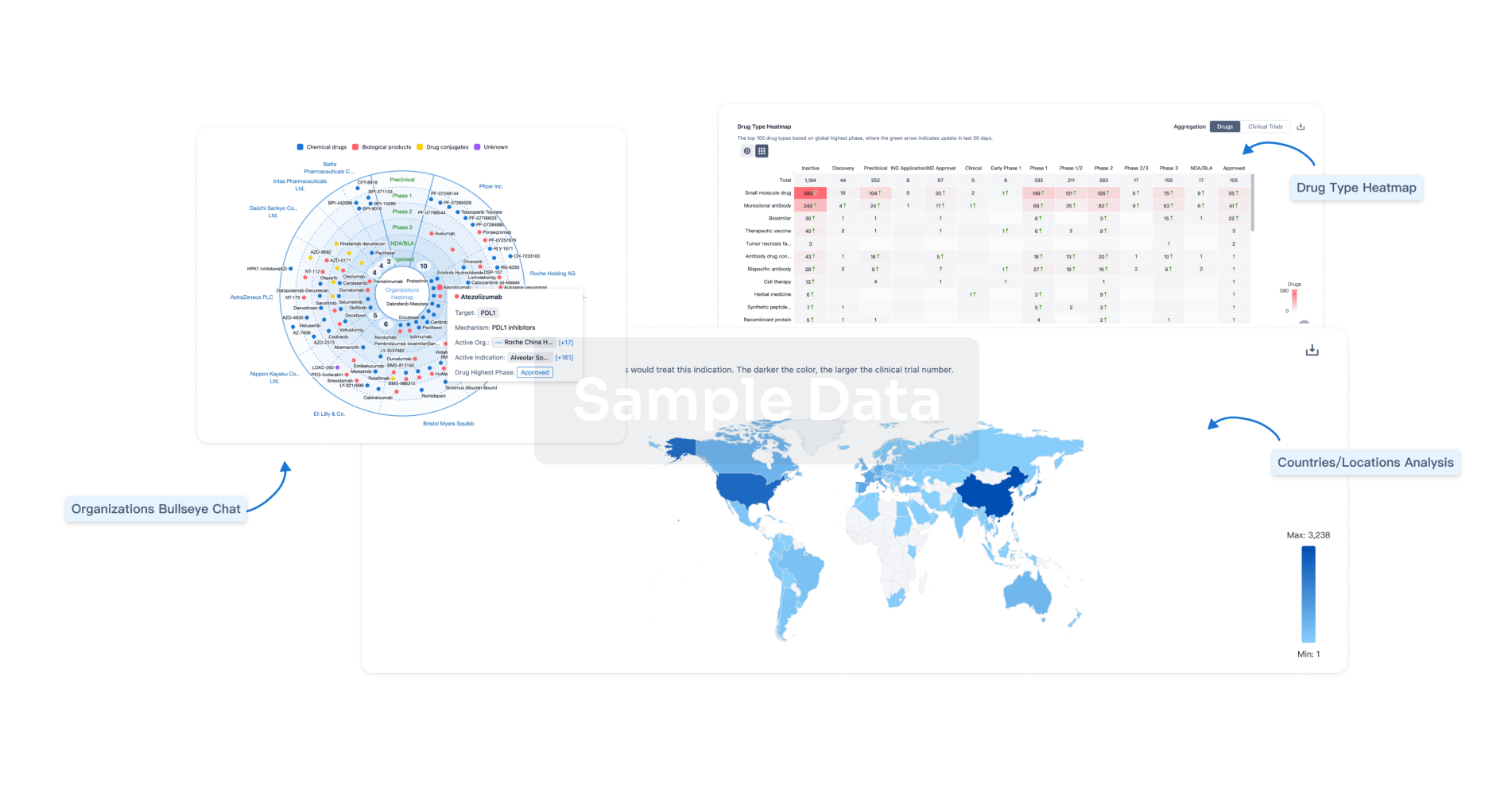Request Demo
Last update 08 May 2025
Nonpuerperal Galactorrhea
Last update 08 May 2025
Basic Info
Synonyms AMENORRHEA-GALACTORRHEA SYNDROME, Ahumada-Del Castillo syndrome, Ahumada-del Castillo + [66] |
Introduction Spontaneous flow of milk from the breast, unassociated with childbirth or nursing. [https://orcid.org/0009-0006-4530-3154] |
Related
1
Drugs associated with Nonpuerperal GalactorrheaTarget |
Mechanism OXTR agonists |
Active Org. |
Originator Org. |
Active Indication |
Inactive Indication |
Drug Highest PhasePhase 2 |
First Approval Ctry. / Loc.- |
First Approval Date20 Jan 1800 |
31
Clinical Trials associated with Nonpuerperal GalactorrheaNCT06929091
Ready, Set, Nourish Study
This study is about preparing women with excessive weight to have better breastfeeding outcomes. By doing this study, we hope to learn more about how hand expression of breast milk or colostrum during pregnancy can help prepare a mother to breastfeed after she has her baby and about how her diet affects the composition of her breast milk and her baby's growth and development.
Start Date01 Jul 2025 |
Sponsor / Collaborator |
NCT06857149
Effect of Cırcadıan Feedıng on Growth Parameters of Preterm Newborn
This study was planned as a randomized controlled experimental study to determine the effect of circadian feeding on the growth parameters of preterm newborns. The data of the study were collected from patients aged 32-34 in the Neonatal Intensive Care Unit (NICU) of Selçuk University Faculty of Medicine. It will consist of premature babies and mothers born during the first week of gestation. The sample size was planned to include 48 preterm newborns and their mothers. Mother-Preterm Introductory Information Form, Breast Milk Feeding Follow-up Form, Breast Milk Content Parameters Follow-up Form, Newborn Baby Follow-up Form, Baby scale and height meter will be used in data collection. Data will be used with SPSS 21.0 package program and Kolmogorov-Smirnov (K-S) test for normality. Chi square, independent sample t-test, paired simple t-test, Wilcoxon tests and analysis of variance in repeated measurements will be used in the analysis of the data.
The research was conducted in the following order. All permissions were obtained for data collection. Individual characteristics were obtained from family members and recorded in the questionnaire. Newborns in the study or control group were randomly determined according to the day of admission.
For the newborns in the study group, the milk expressed by the mother at night will be given to the baby at night, and the milk expressed during the day will be given to the baby for daytime feeding. During this one-month period, the baby's weight and height will be measured and recorded twice a week.
For the newborns in the control group, the condition of "expressed milk is given first", which is used in routine practice, will be fulfilled, regardless of the day and night characteristics of the expressed breast milk. During this one-month period, the baby's weight and height will be measured and recorded twice a week.
Measurements of all newborns were made at the same time of the day.
The research was conducted in the following order. All permissions were obtained for data collection. Individual characteristics were obtained from family members and recorded in the questionnaire. Newborns in the study or control group were randomly determined according to the day of admission.
For the newborns in the study group, the milk expressed by the mother at night will be given to the baby at night, and the milk expressed during the day will be given to the baby for daytime feeding. During this one-month period, the baby's weight and height will be measured and recorded twice a week.
For the newborns in the control group, the condition of "expressed milk is given first", which is used in routine practice, will be fulfilled, regardless of the day and night characteristics of the expressed breast milk. During this one-month period, the baby's weight and height will be measured and recorded twice a week.
Measurements of all newborns were made at the same time of the day.
Start Date01 Jan 2025 |
Sponsor / Collaborator |
NCT04614714
Nicotinamide Riboside and Milk Production in the NICU
Breastfeeding has well-established immunity and developmental benefits for newborns, yet mothers of preterm infants often struggle to provide sufficient breast milk. The investigators hypothesize that supplementing mothers of preterm infants with nicotinamide riboside (NR) during early postpartum will result in increased milk production. NR is a unique precursor to NAD+, which functions in whole-body metabolism, including that which supports the elevated energy demands of lactation. In lactating rats, NR supplementation improved milk quantity and quality, with metabolic benefits for the mother and lasting protective advantages for the offspring. No studies have been conducted to date that explore the short- or long-term use of NR for increasing milk supply in lactating women. This study will follow a small cohort of women and very preterm infants in the NICU throughout two intervention phases-- one in which each mother will randomly receive either NR or a placebo, then the opposite treatment-- to determine the effect of maternal NR supplementation on expressed milk volume and other markers of metabolism.
Start Date01 Dec 2024 |
Sponsor / Collaborator |
100 Clinical Results associated with Nonpuerperal Galactorrhea
Login to view more data
100 Translational Medicine associated with Nonpuerperal Galactorrhea
Login to view more data
0 Patents (Medical) associated with Nonpuerperal Galactorrhea
Login to view more data
393
Literatures (Medical) associated with Nonpuerperal Galactorrhea04 Mar 2025·New Zealand Veterinary Journal
Where do all the ewes go? Ewe culling and mortality in 34 sheep flocks in New Zealand
Article
Author: Corner-Thomas, RA ; Flay, KJ ; Kenyon, PR ; Morgan, S ; Ridler, AL ; Mote, S
01 Mar 2025·Journal of Dairy Science
Influence of fat-to-protein ratio and udder health parameters on the milk urea content of dairy cows
Article
Author: Losand, B ; Dreyer, C ; Spiekers, H ; Hummel, J
01 Feb 2025·Heliyon
Clinical features of cystic neutrophil granulomatous mastitis in 62 cases
Article
Author: Zhang, Hongkai ; Wang, Mengjie ; Zhang, Dongxiao ; Feng, Shuo ; Fu, Na ; Zeng, Yifei ; Cui, Jianchun ; Mansoor, Khattak Mazher ; Zhao, Wenjie ; Liu, Min
Analysis
Perform a panoramic analysis of this field.
login
or

AI Agents Built for Biopharma Breakthroughs
Accelerate discovery. Empower decisions. Transform outcomes.
Get started for free today!
Accelerate Strategic R&D decision making with Synapse, PatSnap’s AI-powered Connected Innovation Intelligence Platform Built for Life Sciences Professionals.
Start your data trial now!
Synapse data is also accessible to external entities via APIs or data packages. Empower better decisions with the latest in pharmaceutical intelligence.
Bio
Bio Sequences Search & Analysis
Sign up for free
Chemical
Chemical Structures Search & Analysis
Sign up for free

